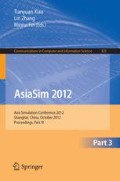Abstract
The cooperation of unmanned aerial vehicles (UAVs) can improve operational efficiency and survival probability in rescue and penetration missions. We present a new method of dynamic formation flight control of UAVs. It contains three control steps: (i) Formation Keep; (ii) Obstacle Avoidance; (iii) Formation Flight Control Based on Behavior. The method of formation flight control based on behavior is designed to solve the problem of high requirements on communication quality of traditional formation flight control based on virtual structure. The method based on behavior can reduce the requirements on wireless data update rate and enhance the ability of obstacle avoidance of UAVs. In the meanwhile, we introduce virtual structure as reference to improve the stiffness of formation flight control based on behavior. On condition that the formation is relatively stable, the new method can enhance the ability of obstacle and threat avoidance in unknown environments of UAVs and can be used for reference for the UAVs in cooperative low-altitude penetration.
Access this chapter
Tax calculation will be finalised at checkout
Purchases are for personal use only
Preview
Unable to display preview. Download preview PDF.
References
Wu, S.T., Fei, Y.H.: Flight Control System, ch. 5. Beijing University of Aeronautics and Astronautics Press, Beijing (2005)
Proud, A.W., Pachter, M., D’Azzo, J.J.: Close Formation Flight Control. In: Proceedings of the 1999 AIAA Guidance, Navigation and Control Conference, Portland, OR, August 9-11 (1999); 99-4112
Desai, J.P., Ostrowski, J.P., Kumar, V.: Modeling and control of formations of nonholonomic mobile robots. IEEE Transactions on Robotics and Autornation 17(6), 905–908 (2001)
Buzogany, L.E., Pachter, M., D’Azzo, J.J.: Automated Control of Aircraft in Formation Flight. In: Proc. AIAA Guidance, Navigation, and Control Conference, pp. 1349–1370 (1993)
Koo, T.J., Shahruz, S.M.: Formation of a group of unmanned aerial vehicles (UAVs). In: Proc. American Control Conference, vol. 1, pp. 69–74 (2001)
Das, A.K., Fierro, R., Kumar, V., Ostrowsky, J.P., Spletzer, J., Taylor, C.: A Vision-Based Formation Control Framework. IEEE Trasaction on Robotics and Automation 18(5), 813–825 (2002)
Mariottini, G.L., Morbidi, F., Prattichizzo, D., et al.: Leader-follower formations: Uncalibrated vision-based localization and control. In: IEEE International Conference on Robotics and Automation, pp. 2403–2408. IEEE, Piscataway (2007)
Balch, T., Arkin, R.C.: Behavior-based formation control for multirobotteams. IEEE Transactions on Robotics and Automation 14(6), 926–939 (1998)
Beard, R.W., Lawton, J., Hadaegh, F.Y.: A feedback architecture for formation control. In: American Control Conference, pp. 4087–4091. IEEE, Piscataway (2000)
Lewis, M.A., Tan, K.H.: High precision formation control of mobile robots using virtual structures. Autonomous Robots 4(4), 387–403 (1997)
Wu, S.T.: Stochastic Robustness Analysis and Design for Guidance and Control System of Winged Missile, ch. 2. National Defense Industry Press, Beijing (2010)
Ogren, P., Egerstedt, M., Hu, X.: A control Lyapunov approach to multi-agent coordination. In: Proceedings of the IEEE Conference on Decision and Control, Orlando, FL, pp. 1150–1155 (2001)
Author information
Authors and Affiliations
Editor information
Editors and Affiliations
Rights and permissions
Copyright information
© 2012 Springer-Verlag Berlin Heidelberg
About this paper
Cite this paper
Cai, D., Sun, J., Wu, S. (2012). UAVs Formation Flight Control Based on Behavior and Virtual Structure. In: Xiao, T., Zhang, L., Fei, M. (eds) AsiaSim 2012. AsiaSim 2012. Communications in Computer and Information Science, vol 325. Springer, Berlin, Heidelberg. https://doi.org/10.1007/978-3-642-34387-2_49
Download citation
DOI: https://doi.org/10.1007/978-3-642-34387-2_49
Publisher Name: Springer, Berlin, Heidelberg
Print ISBN: 978-3-642-34386-5
Online ISBN: 978-3-642-34387-2
eBook Packages: Computer ScienceComputer Science (R0)

